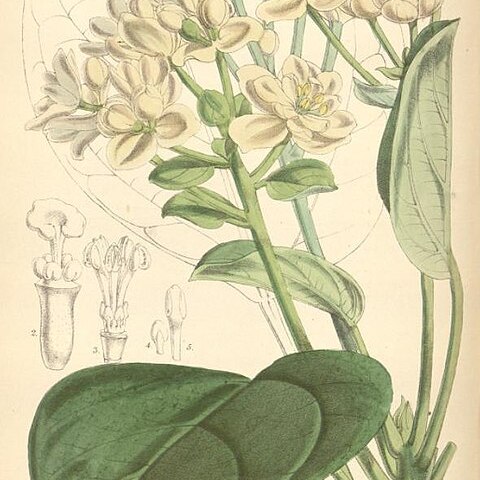Trees or shrubs, sometimes (not in Australia) scandent, monoecious or dioecious. Leaves alternate, simple, palmately lobed or (not in Australia) palmately compound, exstipulate, petiolate. Inflorescence usually an axillary cymose panicle of bracteate or ebracteate flower clusters, often corymbose. Flowers regular, bisexual or unisexual. Perianth segments 6–12 in 2 whorls or 1 whorl of 4–8 lobes. Stamens 3–7, rarely 1 or 2, sometimes alternating with staminodes; anthers 2-locular, dehiscing by valves laterally or antrorsely. Pollen grains subglobose, inaperturate, usually echinate. Female or bisexual flowers subtended by 2 bracteoles or a cupule formed by inflated upper part of pedicel, or bracteoles absent. Ovary inferior, 1-locular; ovule 1, pendulous. Style simple. Stigma discoid, capitate, oblique or lobed. Fruit drupaceous to dry, ± ribbed longitudinally, often ± enclosed by enlarged bracteoles or cupule or fruit winged apically from accrescent perianth lobes or (not in Australia) fruit winged longitudinally. Seed 1; endosperm absent.
Trees, shrubs, or scandent lianas. Leaves simple or palmately compound, petiolate, circinate and scandent in part, estipulate. Flowers bisexual, unisexual, or polygamous, actinomorphic, in axillary or terminal corymbs or cymose panicles, with bracts or not. Outer tepals (sepals) 3-5. Inner tepals (petals) similar to outer ones. Stamens 3-5; filament bases with appendages on external sides or not; anthers 2-celled; cells valvate. Ovary inferior, 1-loculed, 1-ovuled; ovule pendulous. Drupe ± costate, broadly 2-4-winged or enclosed in an inflated cupule and wings absent. Seed 1, exalbuminous, coat leathery.
Stamens 3–5 in a single whorl, when the perianth is double opposite the outer segments, often 4; anthers 2-celled, opening introrsely or laterally by 2 valves; staminodes gland-like, in one or two whorls outside the stamens, or absent, those of the outer whorl in pairs at the base of the filaments, those of the inner whorl alternate with the stamens
Fruit dry indehiscent, often winged, longitudinally ribbed or with lateral wings (Illigera), or with 2 apical wings formed by accrescent perianth segments (Gyrocarpus), or wingless and enclosed in an inflated capsule (Hernandia)
Stamens 3–5 in one whorl and opposite the outer segments when perianth is double, or (2)4(7) when perianth is single; anthers 2-thecous, dehiscing introrsely or laterally by 2 flap-like valves
Fruit dry, more or less ribbed, either with 2–4 wings on the body or with two terminal wings formed by enlarged perianth-segments, or wingless but enclosed in the inflated receptacle
Staminodes absent or ± gland-like, 1–2-whorled, usually outside the stamens; outer whorl paired at the base of the stamens, inner whorl alternating with the stamens
Flowers hermaphrodite, or monoecious or polygamous by abortion, actinomorphic, arranged in axillary corymbose or paniculate cymes, bracteate or not
Seed solitary, without endosperm; testa leathery; embryo straight; cotyledons large, plano-convex or flat and twisted around the radicle
Perianth segments subequal, free or shortly united below, in two 3–5-merous, valvate whorls or in one 4–8-merous, imbricate whorl
Seed solitary, without endosperm; embryo straight; cotyledons plano-convex, ± lobed, or flattened and spirally twisted
Inflorescences of axillary, rarely terminal, corymbose or paniculate cymes, pedunculate, bracteate or ebracteate
Flowers regular, bisexual, or unisexual by abortion and the plants monoecious or polygamous, rarely dioecious
Trees or shrubs, sometimes scandent, with alternate, simple or digitately compound leaves; stipules absent
Calyx with 3–5 valvate subequal segments in two whorls or rarely 4–8 in one whorl
Leaves alternate, exstipulate, simple, digitately compound or 3–5-lobed
Ovary inferior, 1-locular; ovule solitary, pendulous, anatropous
Trees, shrubs or lianes, with aromatic oils in stems and leaves
Ovary single, inferior, 1-celled; ovule solitary, pendulous

